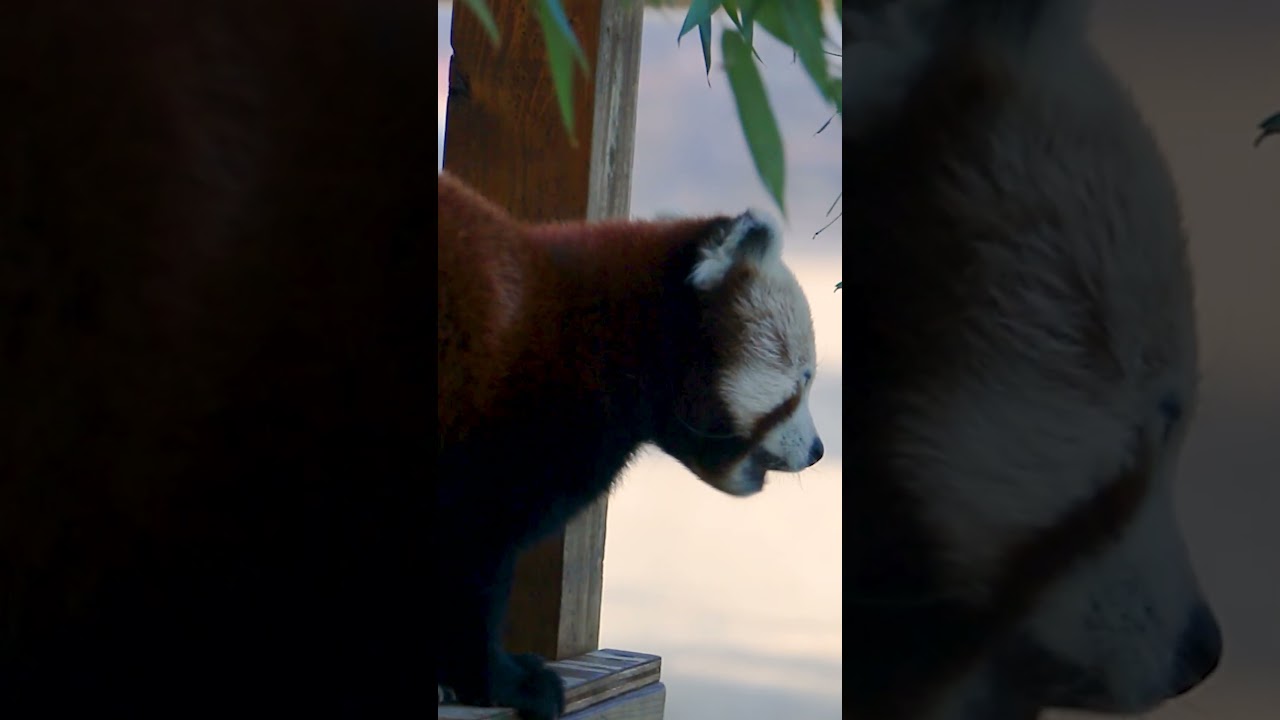– Discover how the cold Iowa winters at Blank Park Zoo become a paradise for red pandas, Razz and Tudou.
– Learn how the red panda‘s natural habitat in the mountainous regions of Asia influences its comfort with the chilly weather.
– Explore the dietary preferences and unique behaviors of the red panda, focusing on their love for bamboo and other food items.
– Understand the challenges of red panda conservation and what zoos like Blank Park Zoo are doing to help protect this species.
Wrapped in a layer of crisp, cold air, the winter days in Iowa transform the Blank Park Zoo into a somewhat unexpected haven for a pair of charming creatures native to the high-altitude forests of Asia. These auburn-furred bundles of energy are none other than Razz and Tudou, the zoo’s resident red pandas. While many of us might yearn for the comfort of a warm blanket during these freezing months, it’s actually the best time of year for these little animals. In this article, I will tell you why.
Imagine trekking through the mist-covered slopes of the eastern Himalayas or venturing into the wooded terrains in southwest China. It’s here, amidst these serene locales, where the red panda, also affectionately known as the “firefox,” finds its home. Adapted to the cool mountain climate, red pandas relish in the frosty embrace of winter. With thick, russet fur that could make even the finest down jacket envious, these pandas are well prepared for the drop in temperature.
Tackling the chill with insulating fur isn’t the red panda’s only trick. If you happen to visit Blank Park Zoo on one of these brisk mornings, watch the way Razz and Tudou curl up, tucking their bushy tails around themselves like a scarf. This isn’t just an adorable sight but a vital strategy to conserve heat. They show us that there’s always a way to find comfort, no matter the circumstances – and sometimes, it’s just a tail-wrap away.
Red pandas share more than their name with the famous giant pandas; bamboo comprises the bulk of their diet. In fact, Razz can spend most of her day munching on this tough, fibrous vegetation, showcasing an appetite that belies her size. However, unlike their larger, more famous bear cousins, these pandas are not strictly herbivores. They may also feast on fruit, acorns, eggs, or even the occasional bird or mouse, demonstrating the value of a varied diet for optimal health – a takeaway we could all keep in mind.
While it’s true that the colder temperatures of Iowa are a paradise for our red panda duo, their wild counterparts aren’t as fortunate. Deforestation and poaching in Asia have dwindled the red panda’s numbers, rendering the species vulnerable. And it’s here, at Blank Park Zoo, that one of the many battles for conservation is being fought. By providing a safe and stimulating environment for Razz and Tudou and educating the public, the zoo plays a vital role in safeguarding the future of the species.
What’s more, breeding programs across various zoos globally aim to ensure genetic diversity and a safety net for these creatures. As you enjoy watching the pandas’ acrobatics among the trees and logs, take a moment to appreciate the broader efforts that go into protecting such enchanting animals. It’s vital to recognize the collective responsibility we share in preserving our world’s natural wonders.
Speaking of natural wonders, did you know that red pandas are the original pandas, only later sharing their name with the giant pandas discovered afterward? As the sole representatives of the Ailuridae family, red pandas are truly unique, unlinked closely to any other species on Earth. They remind us of the joy in uniqueness and the importance of embracing and protecting our individuality in a homogenized world.
Their unique features extend beyond their distinguished lineage. Those soft, rounded faces with artful white markings and perky ears have evolved to communicate emotion and intent, just like ours in many ways. And their semi-retractable claws, combined with an agile, rotating wrist—an evolutionary marvel—are nature’s own Swiss Army knives, perfect for their arboreal lifestyle. Observing Razz as she deftly navigates the complex network of branches in her habitat, one can’t help but marvel at nature’s genius designs.
For those planning a visit to Blank Park Zoo, remember to tread lightly as you approach the red panda exhibit. The solitude and quietness complement their shy, introspective nature. If you’re fortunate, you’ll catch Razz engaging in a moment of contemplation, reminding us of the value of stillness in our own overwhelmingly busy lives.
Moreover, red pandas are crepuscular, meaning they’re most active during the early morning or late evening hours. This behavior pattern is shared by many animals and offers a glimpse into the importance of tuning into one’s own natural rhythms for peak performance and well-being.
As the zookeepers can attest, Razz and Tudou’s care is a testament to the dedication and love that goes into animal husbandry. From preparing their specialized diets to enriching their habitat with stimulating activities that encourage natural behaviors, it’s a daily practice of compassion and connection. It reflects the idea that, irrespective of species, caring for one another is integral to the fabric of life.
In a time where our planet faces unprecedented ecological challenges, stories like those of Razz and Tudou serve as gentle nudges to awaken our collective conscience. Each visit to the zoo, each encounter with these red pandas, strengthens the bonds between humans and the natural world.
Remember, the survival of red pandas, both in the wild and in captivity, is in our hands.
*****
Source Description
It’s Razz and Tudou’s favorite time of year! Cold Iowa winters are great for red pandas as their species is found high in the mountains of Asia. Next time you visit the zoo on a chilly day, approach their habitat quietly and you might just see Razz munching on some bamboo!


